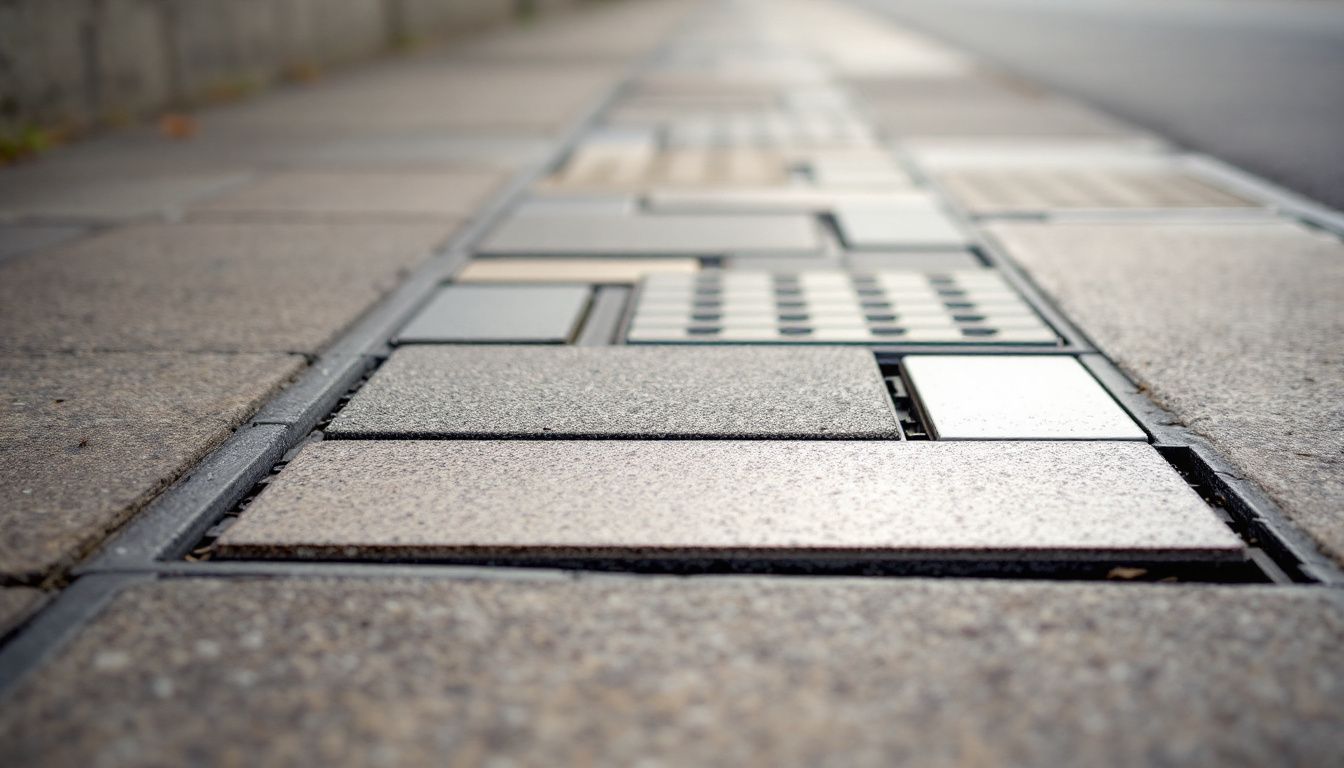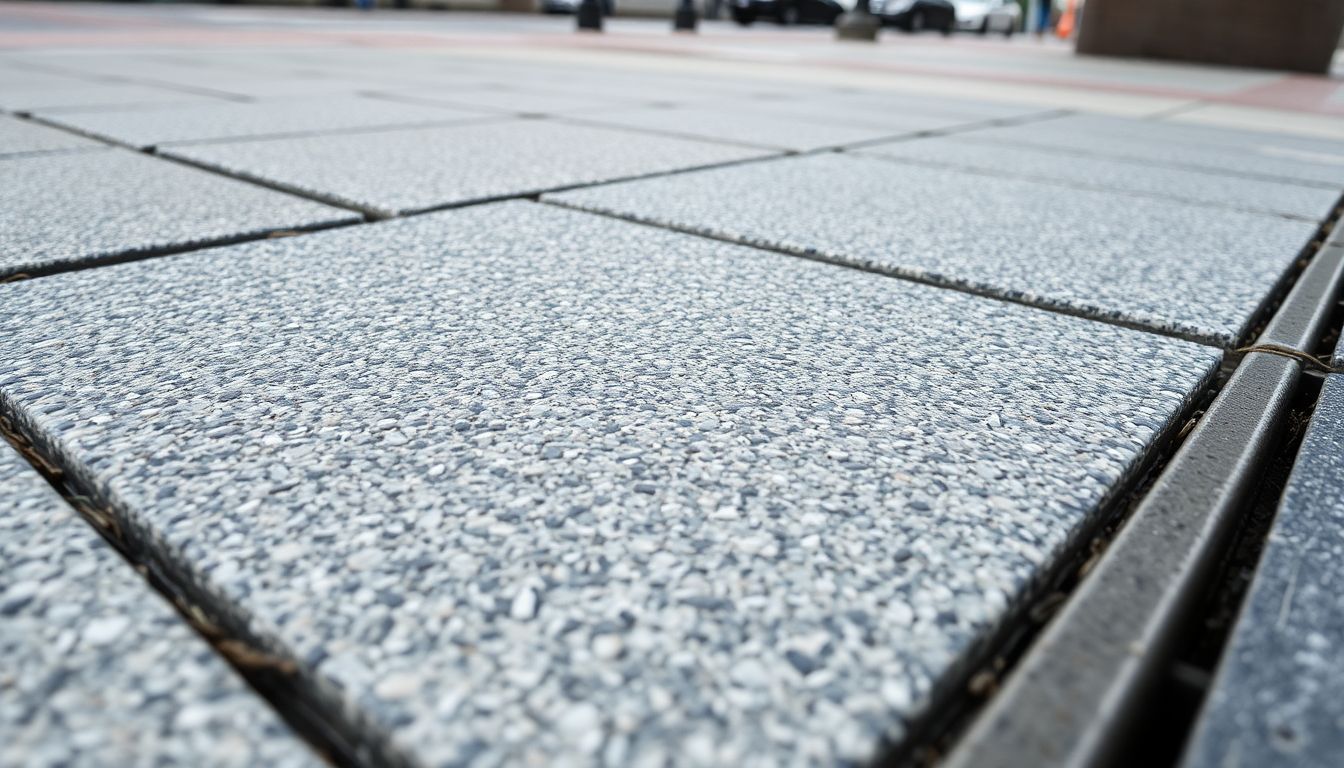
Have you ever noticed that tactile paving tends to get damaged quickly? We encountered the same issue in our projects. Finding the appropriate “Tactile Paver Material” can be quite time-consuming, so we conducted thorough research to provide assistance.Since japanese Seiichi Miyake first invented tactile paving in 1965, builders have experimented with various materials. In this article, we will clearly demonstrate how concrete, rubber, ceramic, and stainless steel perform over time—helping you choose the best material for enduring pedestrian safety.
Common Materials Used in Tactile Pavers

We encounter tactile pavers daily, assisting individuals with vision loss in navigating sidewalks, curbs, and transit systems safely. But have you ever wondered what these pavers are actually composed of? Each material comes with its own set of strengths and weaknesses, and some may surprise you. Let’s explore this in detail.
Concrete: Durability and cost-effectiveness
Concrete tactile paving is a top choice on pedestrian crossings and sidewalks, due to strength and affordability. Pre-cast concrete was first used by Seiichi Miyake for tenji blocks, but today’s options have diversity.The concrete patios cost around $865 to $1,085 per 120-square-foot area and installation labor runs about $540 to $650.It can a long-term savings option for us.Raised dots (“blister paving” or “truncated domes”) must stay at least 3mm high; other attention patterns require 4.5mm. Sure, it’s true that concrete tactile tiles don’t offer many designs ,but it is durable for building our road.
Rubber: Flexibility and slip resistance
Though concrete may be durable and affordable, rubber tactile paving offers its own perks. Rubber pavers are often made from recycled rubber—usually old tires (yes, those same ones piling up at the junkyard).
They come in many cool colors, shapes, and sizes. We have installed these “blister tactile paving” tiles for pedestrian crossings and curb ramps many places especially inside places.They’re super popular with visually impaired individuals due to their comfortable surface ,clear detectable warning plates and flexible application.
Their flexible material does cushion falls better than hard surfaces like ceramic or stainless steel. Yet rubber can chip or crack if placed in high-traffic areas—especially busy platform edges or shared cycleways.
Extended UV light exposure may also lead to some surface breakdown on outdoor footways over time. Still—we’ve found that using quality ground surface indicators helps keep public spaces accessible for travelers dealing with visual impairments or sight loss every day.
Ceramic: Aesthetic appeal and high weather resistance
While rubber pavers excel in flexibility and slip resistance for pedestrian safety, ceramic tactile paving offers a stylish look with high weather resistance. Ceramic pavers come mainly as porcelain types: glazed or textured.
Glazed tiles give an elegant look and easier cleaning; textured types offer excellent grip (we’ve seen them perform well on wet surfaces which better than rubber pavers). Both versions resist fading and cracking over time—ideal for areas like bus stops, high traffic crossings, shared cycleways, platform edges at public transport stations, or outdoor spaces facing harsh snow or heavy rains.
Proper installation is key to getting the best from these ground surface indicators—we’ve found careful fitting helps porcelain hold up well year after year.
By choosing blister tactile paving patterns—also called detectable warning plates—we help visually impaired individuals safely cross busy streets without slipping or tripping. The ceramic tactile paving provides accessible public spaces that last long, while making sidewalks safer, attractive—and welcoming—to all of us who use them daily.
Stainless Steel: Longevity and corrosion resistance
Stainless steel material gives tactile paving long-lasting quality and strong corrosion resistance. What makes this metal special is how well it holds up against moisture, chemicals, and tough weather—the kinds of things builders like us don’t want to worry about, right?
Metal tactile paving offers high durability with a slip-resistant surface that works great for busy pedestrian crossings or crowded platform edges.
Conclusion
Selecting the right tactile paving materials can greatly improve pedestrian safety and accessibility. To understand these choices better, we reached out to Mike mai—an expert with more than 8 years of experience in tactile paver tiles in morera company.
We emphasizes key features of durable tactile pavers such as longevity, slip resistance, ease of installation—and how clearly they convey attention or guidance patterns through touch.Concrete provides dependable strength at reduced cost—but rubber delivers stronger grip under wet conditions and flexibility that is ideal near platform edges or shared cycleways.Ceramic tiles offer attractive finish while resisting harsh weather over time; steel plates excel due to unmatched durability against corrosion but require careful placement for best sensory feedback.
All products must meet requirements set by laws protecting blind users—including ADA compliance in the U.S.—to ensure both ethical practice and user security. Clear labeling from manufacturers regarding certifications helps builders select trustworthy options suited for specific applications without confusion.
We further highlights some trade-offs within material comparison—for instance ceramic looks great yet costs more upfront compared with standard cement-based blocks; stainless steel lasts longest but feels different underfoot which may confuse certain users until familiarized through regular use.
If you are interested in ceramic tactile tiles, we invite you to reach out to us. Feel free to get in touch with Foshan Morera Company for more information. We would be happy to assist you with your inquiries regarding our products.
References
- https://landdesignsbycolton.com/concrete-vs-pavers/
- https://elispaverpatios.com/choose-your-perfect-match-selecting-the-right-pavers-for-your-style-needs/ (2024-02-29)
- https://unilock.com/types-of-pavers/
- https://ntpavers.com/glazed-vs-textured-porcelain-pavers-which-is-best/
- https://www.landcraftpaver.com/post/how-do-porcelain-pavers-compare-to-other-outdoor-paving-materials-in-terms-of-durability
- https://www.researchgate.net/publication/354367986_Corrosion_Studies_on_Stainless_Steel_316_and_their_Prevention_-_A_Review (2021-09-20)
- https://www.tactilesolution.ca/blog/how-to-choose-the-right-tactile-tile-for-your-project
